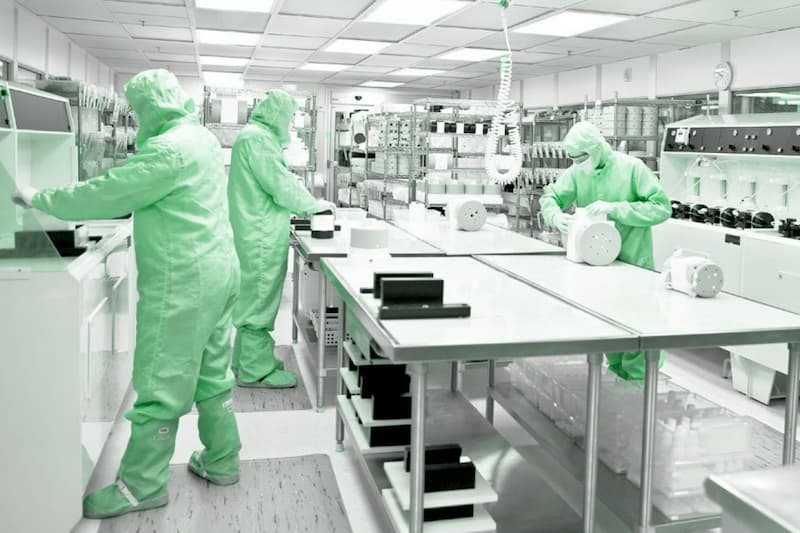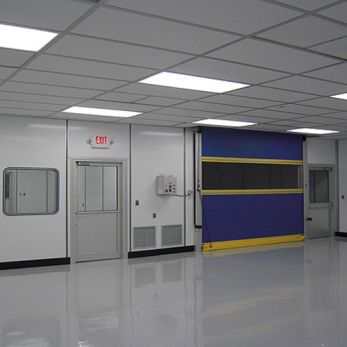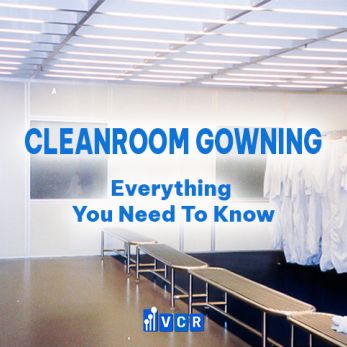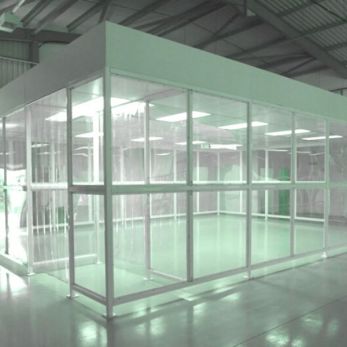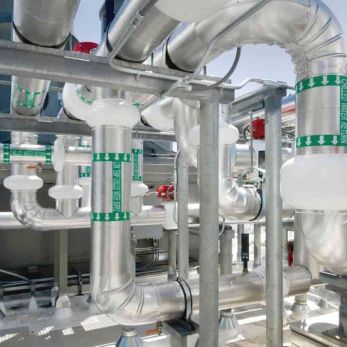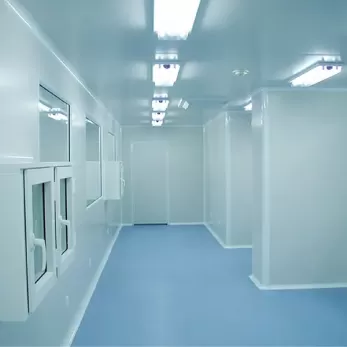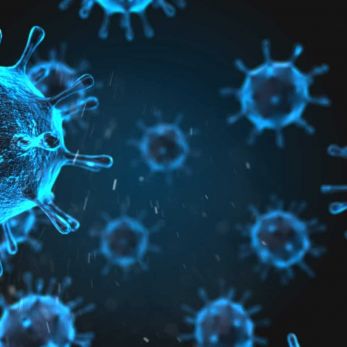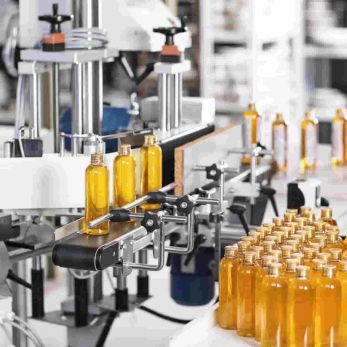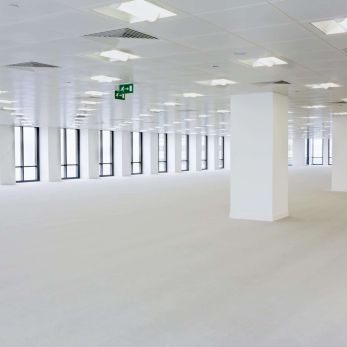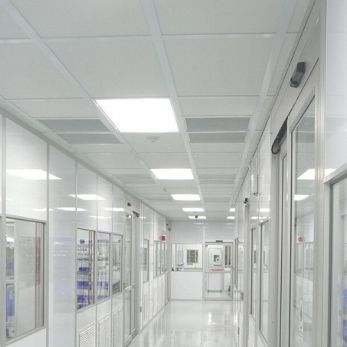5+ things you need to know about cleanroom
VCR will show you top 5+ things you need to know about cleanroom: temperature, differential pressure, humidity, and so on. Let's find out!
I. Cleanroom structure
1. The walls and roof of cleanrooms are generally made of 50mm-thick sandwich panels, which are characterized by beautiful appearance and strong rigidity.
Arc corners, doors, window frames, etc. are generally made of special alumina profiles
2. The floor can be made of epoxy self-leveling floor or high-grade wear-resistant plastic floor. If there is an anti-static requirement, an anti-static type can be selected.
3. The supply and return air ducts are made of hot-dip zinc plate, and the flame-retardant PF foamed plastic plate with good air filtration and heat preservation effect is attached.
4. The stainless steel frame is used for the high-efficiency air outlet, which is beautiful and clean. The perforated mesh plate is made of painted aluminum plate, which does not rust and does not stick to dust and should be cleaned.
II. Needed air conditioning and air filtration
1. Room temperature air dust removal, high-temperature air purification, air filtration, and station vacuuming.
Suitable industries: wood processing, rubber, plastics, mining, glass ceramics, pigments, electronics, pharmaceuticals, textile printing and dyeing, papermaking and electroplating, machinery manufacturing, chemical industry, steel smelting, fertilizers and pesticides, etc.
2. Degreasing mist and peculiar smell in the factory workshop, purifying and deodorizing welding fume, and deodorizing in kitchen food processing; purification of food processing workshop, sterilization and purification of laboratory inspection room, hospital, edible fungus breeding plant, etc.
3. Cooling in high-temperature workshops:
- Cooling of lamp workers in glass manufacturing plants, cooling in glass fiber production workshops, cooling in ceramic production workshops, cooling in food processing workshops, leather processing, chemical electronics, schools, and metal casting workshops.
- Edible mushroom breeding sheds, farms, plantations to cool down and warm up.
- Baking workshop cooling and dehumidification, etc.
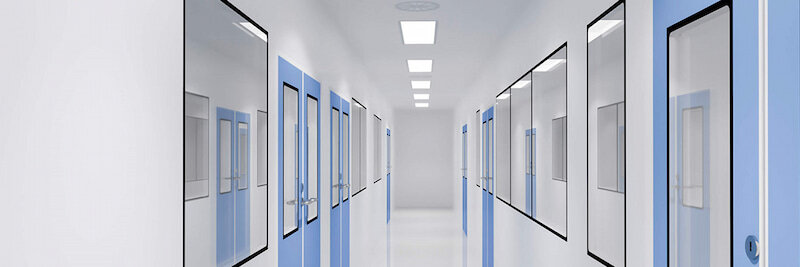
III. Cleanroom parameters
- The number of air changes: 100000 level ≥ 15 times; 10000 level ≥ 20 times; 1000 ≥ 30 times.
- Differential pressure: the main workshop to adjacent rooms ≥ 5Pa
- Average air velocity: 0.3-0.5m/s for class 10 and class 100 cleanrooms
- Temperature > 16 ℃ in winter; < 26 ℃ in summer; fluctuation ± 2 ℃
- The temperature is 45-65%
- The humidity of the GMP powder workshop is about 50%; the humidity of the electronic workshop is slightly higher to avoid static electricity.
- Noise ≤ 65dB (A)
- Fresh air supplementary volume is 10%-30% of the total air supply volume
- Illumination 300LX
IV. Cleanroom air filtration equipment
Cleanroom air filtration equipment can use air handling unit (AHU), fan filter unit (FFU), bag filter, cleanroom workbench, pre-filter/fine filter/high-efficiency HEPA filter, sterilization filters, etc.
The general working principle is: when the controller is powered on, strong static pressure is generated at the port of the air handling unit, so that the air is oriented and sucked into the separator. The collision occurs under the action of the wind wheel in the oil mist separator, so that the particles are turned into clean air.
One-time filtration liquid phase capture: Rotary spiral filter intercepts the solid particles in the inhaled medium first.
* By thoroughly intercepting larger solid and dust particles in the front section, the pressure of the multi-stage filtration at the rear end is greatly reduced. Secondary filtration gas phase interception: high pressure collision centrifugal separation intercepts liquid phase mist.
* High-pressure collision technology: aerosol particles are collected by coarse filter elements, and fine particles are completed by step-by-step filter elements.
* Centrifugal separation to intercept liquid-phase mist: the media objects are collected by different workpieces in the airflow direction, and the most suitable filter structure and material are selected for different media.
* Personalized filter to intercept aerosol particles: improve the inherent structure in terms of airflow structure, reduce resistance and improve efficiency.
The surface of each air duct is treated with F4 produced by DuPont in the United States, so that the machine has high filtration accuracy and long service life.
* After the oil mist containing fine dust is collected by the third-stage separation, the post-installed activated carbon filter can effectively remove peculiar smell and harmful gas, and the clean air is directly discharged into the air through the fan under the action of the negative pressure of the fan.
V. Air filtration methods
There are 2 kinds of air filtration methods: Physical method and chemical method.
Physical method
1. Adsorptive filtration
Activated carbon is a porous carbon-containing material, it has a highly developed pore structure, and the porous structure of activated carbon provides it with a large surface area, which can be fully contacted with gas (impurities).
Thus giving the unique adsorption properties of activated carbon make it very easy to achieve the purpose of absorbing and collecting impurities. Just like magnetism, all molecules have a mutual attraction.
Disadvantages: ordinary activated carbon cannot adsorb all toxic gases, and the efficiency is low and easy to desorb.
2. Mechanical filtration
HEPA filter (High-efficiency particulate air filter) has an effective efficiency of 99.998% for 0.3 microns.
The characteristic of HEPA is that air can pass through, but fine particles cannot pass through. The HEPA filter consists of a continuous stack of sub-glass fiber membranes folded back and forth to form a wavy gasket to place and support the filter medium.
3. Static electricity
Working principle: The working principle of high-voltage electrostatic adsorption and dust removal is adopted. The electrostatic type is the working principle of high-voltage electrostatic adsorption and dust removal.
Under the action of high-voltage static electricity, the cathode line in the electrostatic field produces corona discharge, and a large number of negative ions are generated in the corona layer, and the negative ions continuously move to the anode under the action of the electrostatic field.
When the dust in the air passes through the electric field, the dust is charged by the collision of negative ions, and the charged dust is also affected by the electrostatic field and moves to the anode (dust collecting pole), and releases the charge after reaching the anode.
Disadvantages: It can remove floating dust (cannot remove poisonous gas), the efficiency is lower and slower than the mechanical type, and it is easy to generate ozone.
This model is rated as the worst purifier in the American market.
Chemical method
1. Photocatalytic method
When the air passes through the photocatalytic air purification device, the photocatalyst does not change itself under the irradiation of light, but it can promote the chemical reaction of harmful substances in the air, such as formaldehyde and benzene, under the action of photocatalysis.
Degradation occurs to generate non-toxic and harmless substances, and bacteria in the air are also removed by ultraviolet light, so the air is purified.
Disadvantages: broad-spectrum, but requires low air flow rate, slow purification speed and certain radiation to the human body, which is a eliminated purification method in Europe and the United States.
2. Pormaldehyde scavenger
It uses chemical substances and formaldehyde to carry out chemical reaction to achieve the purpose of removing formaldehyde
- Chemical reaction type: chemical reaction with formaldehyde to generate carbon dioxide and water, such as ammonia water, etc.
- It is made of biological preparations that react with formaldehyde, such as urea, soybean protein, amino acids, etc.
- Plants: made of plant extracts, such as aloe vera, tea extracts, etc.
- Sealed products: made of film-forming substances, Form a layer of film to prevent the release of formaldehyde, such as chitosan, liquid paraffin, etc.
Disadvantages: First, the substances generated after the chemical reaction are likely to cause secondary pollution. In practice, the phenomenon of secondary detection exceeding the standard often occurs.
Absorb formaldehyde on the basis of not changing the chemical composition, and reduce the formaldehyde content in the air, but this method can cure the symptoms but not the root cause, and formaldehyde is easily released again.
3. Pharmacy, catalytic method
Cold catalyst, also known as natural catalyst, is another new type of air purification material after photocatalyst deodorization air purification material, which can catalyze reaction under normal temperature conditions.
Under normal temperature and pressure, a variety of harmful and odorous gases are decomposed into harmless and odorless substances, which are converted from simple physical adsorption to chemical adsorption, decomposed while adsorption, and remove formaldehyde, benzene, xylene, toluene, TVOV and other harmful gases.
For water and carbon dioxide, in the catalytic reaction process, the cold catalyst itself does not directly participate in the reaction, and the cold catalyst does not change or lose after the reaction, and plays a long-term role.
The cold catalyst itself is non-toxic, non-corrosive, non-combustible, and the reaction products are water and carbon dioxide, which does not produce secondary pollution and greatly prolongs the service life of the adsorption material.
V. Cleanroom applications
Cleanrooms are now more and more widely-used in many industries, such as:
Farms, factories, workshops, textiles, printing and dyeing, clothing, plastic, glass, ceramics, fur, casting, hardware, packaging, printing, electronics factories, electroplating, chemical fiber production, food production cleanroom, baking workshop, tableware disinfection and drying workshop, pharmaceutical cleanroom, etc.

VI. Cleanroom acceptance
Completion and acceptance of the cleanroom is necessary. You have to prepare these things as below:
1. Relevant documents for the cleanroom completion and acceptance:
Ex-factory qualification certificates or inspection documents for main materials, equipment, adjustment devices, automatic control systems,; various engineering quality inspection and evaluation forms; cleanroom design documents, design change instructions and relevant agreements, as-built drawings;
Records of various equipment performance indicators in the purification workshop; start-up and completion reports, civil engineering concealed engineering systems, closed records of pipeline concealed engineering systems, piping system purging records, equipment unpacking records, pipeline pressure test records, air duct leak detection records, etc.
2. The appearance inspection of the purification workshop should be in accordance with:
- all kinds of air purification equipment and static pressure box should be cleaned to ensure dust-free
- all kinds of adjustment devices should be tight, flexible and easy to operate
- all kinds of pipes, automatic fire extinguishing devices and air purification equipment should be installed It should be correct, tight and firm
- the connection between the primary, middle and high-efficiency air filters and the support frame and the connection between the air duct and the equipment should be reliably closed
- various brushing and thermal insulation projects in the purification workshop should comply with relevant regulations
- the inner wall, ceiling surface and floor of the cleanroom should be flat, smooth, free from dust, uniform in color, etc.
- when the supply and return air outlets and various terminal devices, pipes, power line piping, lighting, pass box, the sealing treatment of the crossing points should be tight and reliable.
Here are top 5+ things about cleanroom. Hope you find it useful!






